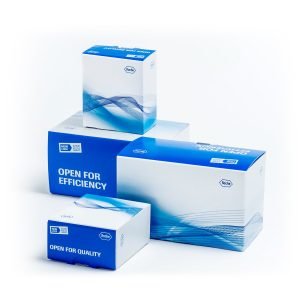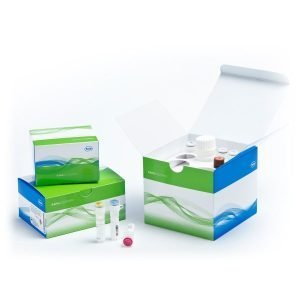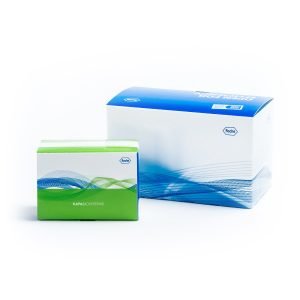
Discover our complete RNA solutions
Streamline your RNA-sequencing workflow.
Choose the best workflow for your RNA-Seq needs
KAPA RNA HyperPrep Kits use novel chemistry that enables the combination of enzymatic steps and few reaction purifications. Use the RNA HyperPrep Kit for total RNA libraries or focus your results with either the KAPA mRNA HyperPrep Kit or KAPA RNA HyperPrep Kit with RiboErase (HMR).


KAPA RNA HyperPrep Kit with RiboErase (HMR) Globin
2 product variations Select options

KAPA RNA HyperPrep Kit with RiboErase (HMR)
2 product variations Select optionsExperience the benefits of our KAPA RNA library preparation kits
RNA Sequencing
RNA sequencing (RNA-Seq) using next-generation sequencing (NGS) technology allows us to profile the entire transcriptome, including both the coding and the noncoding regions. It also aids in the identification of genes that are differentially expressed in distinct cell populations and provides information on their relative abundance. In addition, it allows us to determine the effects of genetic variant splicing events, identify novel transcripts, detect gene fusions, isoforms and other structural variants, and call single nucleotide variants (SNVs).
Why RNA Sequencing?
Enables the evaluation of RNA expression levels, variant splicing events, single nucleotide polymorphisms (SNPs), and insertion deletion (indels) events throughout the transcriptome
Provides the flexibility to evaluate specific populations of RNA through different technologies (targeted RNA sequencing, enrichment of mRNA or depletion of rRNA)
Facilitates the detection of low-abundance transcripts and isoforms through targeted sequencing
Supported workflows for RNA sequencing applications
Selecting the optimal RNA-Seq workflow for your experiment is dependent on many factors, including sample quality, input amount and the transcripts of interest. RNA-Seq workflows that are currently supported can be grouped into these main categories:
Whole transcriptome sequencing
Whole transcriptome sequencing involves the measurement of the complete collection of transcripts in a sample, at a given time. Through interrogation of the whole transcriptome, researchers are able to determine global expression levels of each transcript (both coding and non-coding) and identify exons, introns and their junctions.
mRNA capture
Sequencing of mRNA transcripts opens the door to identifying the molecular basis of phenotypic differences between biological or experimental conditions. Gene expression analysis provides valuable insights beyond the static information of a genome sequence by allowing researchers to detect and quantify the expression levels of multiple coding transcripts.
RNA depletion
The selective depletion of abundant RNA – such as ribosomal RNA (rRNA) and/or globin from blood samples – improves the sensitivity and economy of RNA-Seq, as fewer sequencing reads are associated with “unwanted” transcripts. This enables the detection of more rare transcripts and subtle fold-changes in gene expression levels between biological or experimental conditions from a given amount of sequencing. Alternatively, it allows for less sequencing to be performed to achieve experimental goals.
Find out more about the following RNA-Seq applications:
> Whole transcriptome sequencing from degraded inputs
> Selective transcript depletion
Talk to a local expert
Would you like to learn more about streamlining your sequencing workflows with KAPA RNA library preparation kits? We would love to discuss your options. Contact your Roche representative today, and we’ll be in touch.